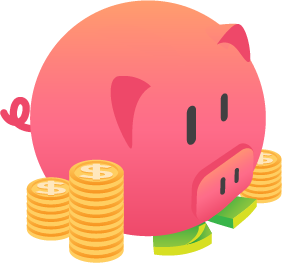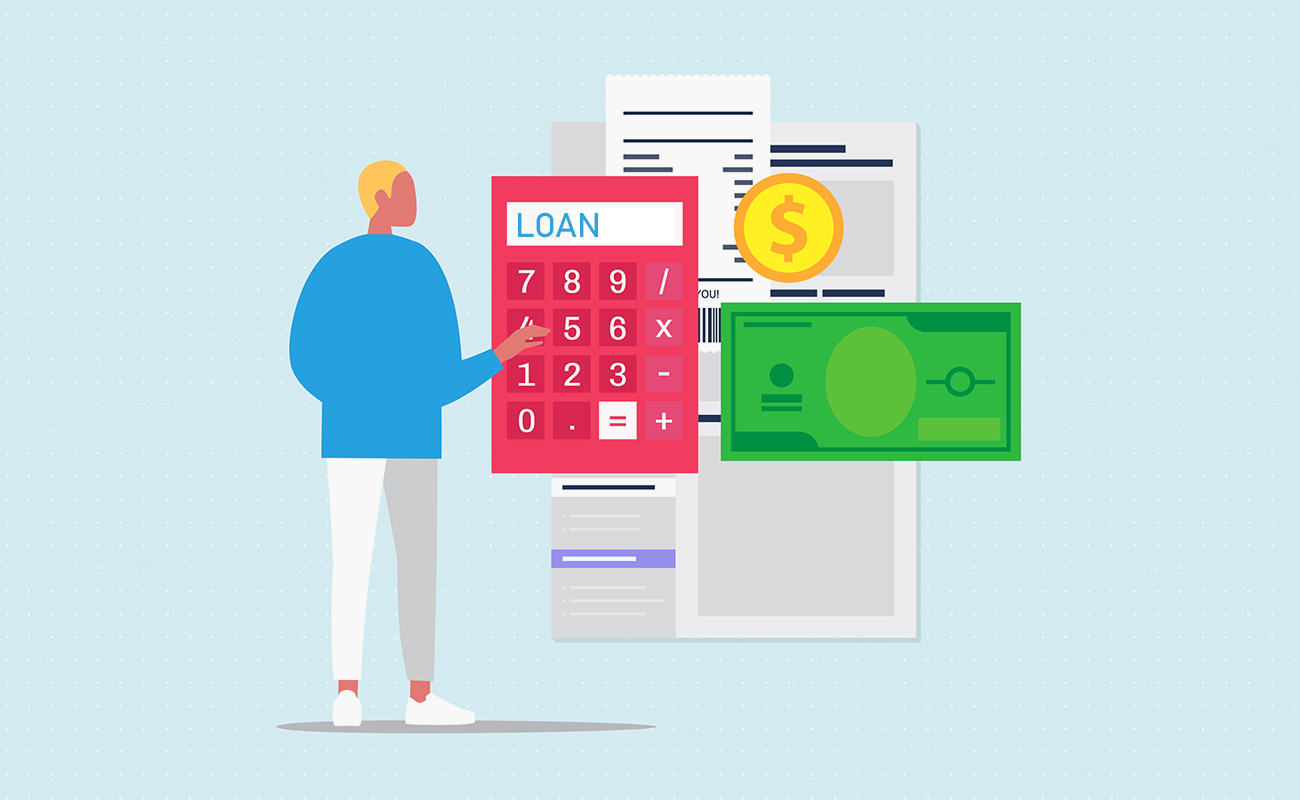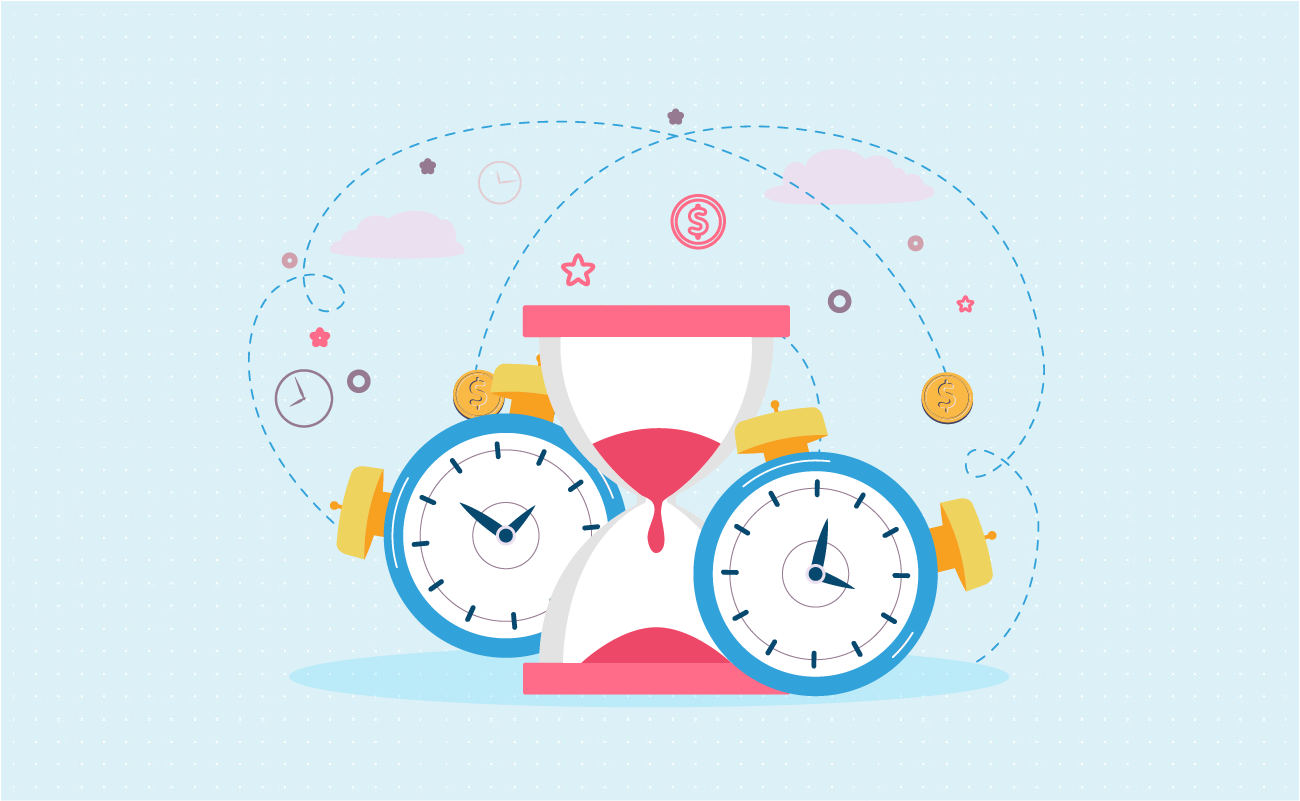Amortization
Biweekly Payments
Interest Only Payments
 Outstanding Loan Balance Calculator
Outstanding Loan Balance CalculatorYou can use this calculator to figure your current loan balance if you have made regularly scheduled amortization payments or if you have made an irregular stream of monthly payments.
Sellers who have sold something on Contract for Deed can use this calculator to figure out the current loan balance if the borrower has not followed the originally stipulated payment schedule in the loan agreement.
Start by entering loan defaults, then click on the [Loan Balance] button to create an interactive table you can edit further to calculate the current outstanding balance on a loan.
Guide published by Jose Abuyuan on February 12, 2020
America is facing a growing debt issue. For the first time in February 2019, the Federal Reserve reported that U.S. consumer debt surpassed the $4 trillion mark. At this level, CNBC notes that Americans spend around 10 percent of their disposable income on credit card bills, car loans, and personal loans.
When it comes to managing loans, it's crucial to make a practical repayment plan. But before you can strategize ways to clear debt faster, it's important to know how loans work. Consequently, those who ignore it are at risk of toxic debt.
In the Journal of Financial Therapy, Vernon Loke, Ph.D., and Sally Anne Hageman, MSW explained the concept of debt literacy, including how it affects people with low incomes:
“Debt literacy may be defined as the ability to correctly assess debt contracts and compound interest when making financial decisions about loans, credit cards, interest rates, and fees. Often, low-income individuals are vulnerable to experiencing debt and social workers are uniquely placed to assist them.”
Don't wait for your debts to spiral out of control. In this guide, we'll explain basic loan components and how to calculate your loan status even with irregular payments. Then, we'll tackle different strategies that can help you pay off loans sooner.

Familiarize yourself with the basic parts of a loan. Take note of the following financial terms:
The principal, interest rate, and loan term ultimately affect your required monthly payment. This the fixed amount you must consistently pay on time. Otherwise, late or missed payments increases your risk of default.

When it comes to loans, you can pay more than the required amount. In fact, paying more is encouraged because it helps reduce your debt sooner. You can also contact your lender to apply extra payments directly to your principal.
The principal or loan amount is basically the money you borrow from your lender. When you review your payment schedule, the principal balance shows how much debt you still owe. Knowing your current balance helps you determine your actual loan status.
When it comes to borrowing money, decide on a reasonable loan amount. Obtaining more than what you need makes monthly payments more difficult to manage. A lower principal also reduces the interest that accrues on your loan.
For the most part, the real cost of a loan is dictated by the interest rate. This is usually based on an annual percentage rate (APR). Interest is the cost lenders impose in exchange for servicing your loan. Basically, a higher interest generates more cost the longer it takes to pay down. Likewise, a lower interest rate will incur lesser interest cost.
People with higher credit scores obtain more favorable rates. Borrowers with lower credit standing, however, get less than desirable rates. This is because individuals with poor credit history are considered a risk to lenders. Before you apply for a loan, make sure to check your credit history and improve your credit score.
You can order a free credit report from AnnualCreditReport.com.
The payment duration or loan term is the arranged time you pay your lender. Examples of this are 3-year personal loans, 5-year car loans, and 30-year mortgages. Longer loans entail higher interest cost.

Avoid extended loans with low monthly payments. These may seem affordable at first, but they end up costing more in total interest. It's better to secure shorter terms with higher monthly payments that fit your budget.
What about credit cards? While bankcards don't operate like loans with fixed loan terms, they also apply interest and principal payments.
The average interest rate on credit cards as of February 2020 is 21.28 percent. It's usually higher because their balances have a higher default rate than other types of loans. Credit cards are easy to misuse for many reasons. It gives you access to intangible credit that's tempting to spend. Moreover, banks only require a minimum payment percentage per month. But just like other loans, you can pay extra to reduce your debt faster.
Use our fixed vs. minimum credit card payments calculator to know how you can reduce debt and save on interest cost by making fixed payments.

To compute your loan's interest payment, principal payment, and balance, just use these formulas:
Examples:
Interest payment = (Interest rate x Loan balance) / 12
= (0.088 x 31,235) / 12
= 2,748.68 / 12
= 229.06
Principal Payment = Monthly Payment – Interest Payment
= 762 – 229.06
= 532.94
Principal balance = (Current Loan Balance – Principal Payment)
= 31,235 – 532.94
= 30,704.06
Take note: These calculations are done repeatedly for the entire loan term. Doing this will help you create a detailed payment schedule, also referred to as the amortization schedule.
What if my payment amount changes? If your monthly payment changes, like when you pay a higher amount, the same calculation applies.

In making monthly payments on mortgages or auto loans, always take note of the specified amount. Having this fixed amount helps you estimate your amortization schedule easily for the entire duration of your loan.
Amortization is a calculation technique applied periodically to a loan balance until it's reduced to zero. It follows a set payment duration for installed payments. When we refer to the amortization schedule, it's a table that breaks down how much of your payment goes to the interest and principal, reducing the balance on your loan.
Below is a sample amortization schedule. Suppose you have a car loan and you were able to make 10 payments. The first table below breaks down your payments if you paid the regular amount.
Table 1
Loan Amount: $33,500
Interest rate: 8.8%
Loan Term: 60 months
Regular monthly payment: $692
| Payment no. / Date | Payment Amount | Starting Balance | Interest paid | Principal paid | Balance |
|---|---|---|---|---|---|
| 1 – May 2019 | $692 | $33,500 | $246 | $446 | $33,054 |
| 2 – Jun 2019 | $692 | $33,054 | $242 | $450 | $32,604 |
| 3 – July 2019 | $692 | $32,604 | $239 | $453 | $32,151 |
| 4 – Aug 2019 | $692 | $32,151 | $236 | $456 | $31,694 |
| 5 – Sept 2019 | $692 | $31,694 | $232 | $460 | $31,235 |
| 6 – Oct 2019 | $692 | $31,235 | $229 | $463 | $30,771 |
| 7 – Nov 2019 | $692 | $30,771 | $226 | $467 | $30,305 |
| 8 – Dec 2019 | $692 | $30,305 | $222 | $470 | $29,835 |
| 9 – Jan 2020 | $692 | $29,835 | $219 | $473 | $29,362 |
| 10 – Feb 2020 | $692 | $29,362 | $215 | $477 | $28,885 |
With the regular payment, notice that your principal payments stayed within the range of $400+, starting at $446. By the 10th payment, it only increased to $477. This slow increase in principal payments consequently reduces the balance at a slower pace. In this table, the original loan amount decreased to $28,885 by the 10th payment. While it looks like a good debt reduction pace, you can still accelerate it with a higher payment.
For the second example, given all other variables are the same, let's say you made higher payments in 10 months. How would this affect your loan status? Let's take a look at the table below.
Table 2
Regular monthly payment $692
Irregular payment amount: $762 (added $70)
| Payment no. / Date | Payment Amount | Starting Balance | Interest paid | Principal paid | Balance |
|---|---|---|---|---|---|
| 1 – May 2019 | $692 | $33,500 | $246 | $446 | $33,054 |
| 2 – Jun 2019 | $692 | $33,054 | $242 | $450 | $32,604 |
| 3 – July 2019 | $692 | $32,604 | $239 | $453 | $32,151 |
| 4 – Aug 2019 | $692 | $32,151 | $236 | $456 | $31,694 |
| 5 – Sept 2019 | $692 | $31,694 | $232 | $460 | $31,235 |
| 6 – Oct 2019 | $762 | $31,235 | $229.06 | $532.94 | $30,702.06 |
| 7 – Nov 2019 | $762 | $30,702.06 | $225.15 | $536.85 | $30,165.21 |
| 8 – Dec 2019 | $762 | $30,165.21 | $221.21 | $540.79 | $29,624.42 |
| 9 – Jan 2020 | $762 | $29,624.42 | $217.25 | $544.75 | $29,079.67 |
| 10 – Feb 2020 | $762 | $29,079.67 | $212.50 | $549.50 | $28,530.17 |
The table above shows you added $70 on top of your required monthly amount on the 6th to 10th payments. The principal paid jumped from $460 to $532.94 on the 6th payment. This is a considerable increase that helps reduce your balance. By the time you make the 10th payment, your original loan amount is reduced to $28,530.17.
In this example, your loan decreased by $354.83 faster compared to paying the regular amount. This tells us if you continue paying higher payments, you will be able to wipe out your debt faster.

Eliminating debt, especially long-term loans with high balances, may seem like an impossible feat. But with careful budget planning and timing, it's possible to pay off your debt sooner. Paying loans faster will save you thousands of dollars in interest costs. Being debt-free will help you save, build wealth, and prepare for emergencies.
Here are several strategies to help you pay your loans sooner:
Making more than the required payment is beneficial to reducing debt. This makes the most impact during the early stages of your loan, particularly if you have long-term debt with a high interest rate.
During the initial years of your loan, more of your payment usually goes to interest cost rather than your principal. More of your payment goes to the principal only during the latter years of your loan.
However, if you make higher payments, your balance accrues less interest throughout the loan. Ultimately, it can shave months or years off your loan term. For example, if you pay an extra $50 every month for a $200,00 loan (30-year fixed mortgage) with 3.5 percent interest, you can reduce the payoff time by 31 months or almost 3 years.
Most loans follow a calendar schedule of 12 monthly payments. But by arranging a biweekly payment schedule, you can make the equivalent of 13 payments a year.
While there are 12 months a year, there are 52 weeks in a year. This allows you to make 26 half payments that add up to 13 whole payments. Again, the extra payment considerably reduces your principal balance.
How does it work? If you follow a biweekly payment for a car loan, you pay half of your monthly car payment every other week. At first, it may seem you're paying the same amount. But by the end of the year, you would make 26 payments, which is equivalent to 13 payments a year.
To enroll in a biweekly payment plan, get in touch with your lender. You can even set automated payments to make it more convenient. Just set it and forget it.

In arranging a biweekly payment plan, make sure to set it every 2 weeks instead of twice a month. This allows you to make 26 half payments in a year. Otherwise, you'll fail to make 13 whole payments.
Some lenders provide the option to make principal only payments to your loan. For instance, if you have a 30-year fixed rate mortgage, contact your lender to inquire how you can make payments to your principal.
Boost your additional payments by using lumpsum funds you may obtain during the year. Some sources of windfall income include tax refunds, work and holiday bonuses, cash gifts, and inheritance money. Any large amount you put towards your loan will substantially decrease your balance.
Save cash by eliminating unnecessary expenses. This is the part where you tighten your belt a bit. If you're used to online shopping, it's best to cut it down. Avoid browsing online stores to keep yourself from buying on a whim.
If you tend to dine at your favorite restaurant a lot, make the effort to eat more at home. And if you don't have time to prepare your own meals, at least eat at less expensive places. You'll be surprised how much cash you can save just by cutting out simple things.
Moreover, save by eliminating things you don't need. These include stuff like magazine subscriptions, cable bundles, and unused gym memberships. You might also want to cut back on expensive hobbies, such as collecting expensive items. But if you really want extra cash, you can sell your collectibles for a hefty sum.

Staying on top of your finances may seem confusing at first. But if you take the time to understand a loan's basic components, you won't feel lost reviewing debt payments. You'll know your debt status and even predict the amount you should pay to remove months off your loan term. Knowing you won't have trouble paying your debt will give you confidence and peace of mind.
Debt education helps you avoid toxic debt. Apply these learnings the next time you need to take out a loan. Once you are better informed, you can secure a more favorable deal with payments that are easier to manage.
Need help assessing different types of loans? Use our compare loans calculator.
Jose Abuyuan is a web content writer, fictionist, and digital artist hailing from Las Piñas City. He is a graduate of Communication and Media Studies at San Beda College Alabang, who took his internship in the weekly news magazine the Philippines Graphic. He has authored works professionally for over a decade.